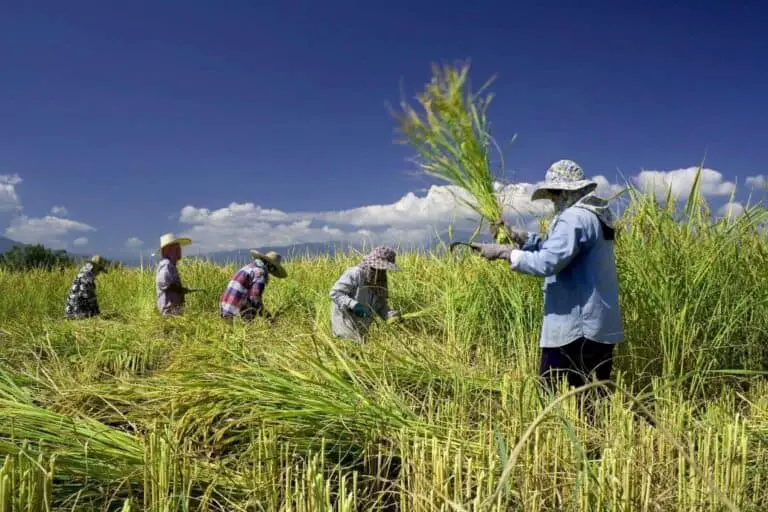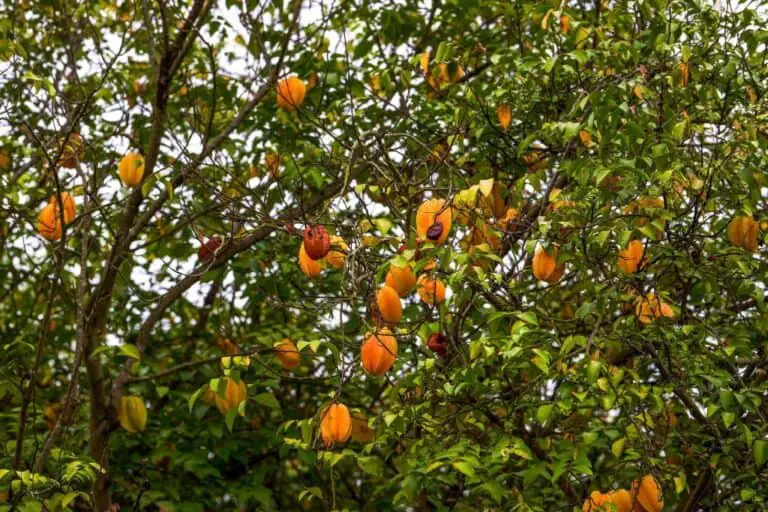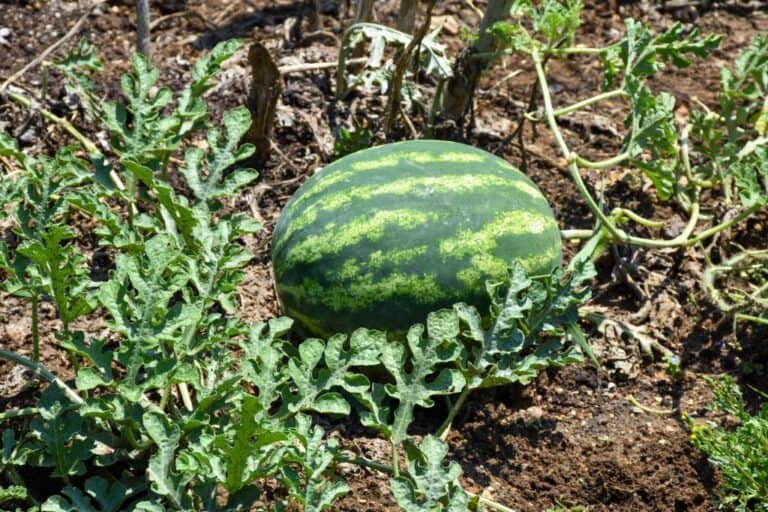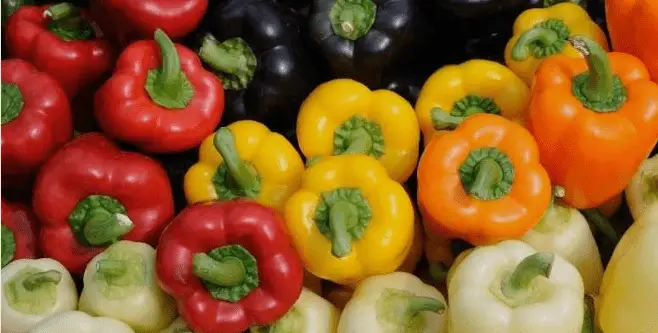What Is Intensive Subsistence Farming? Growing More with Less

Imagine a world where small plots of land yield bountiful harvests and where farmers work diligently to feed their communities despite limited resources. This remarkable feat is made possible through the practice of intensive subsistence farming, a method that defies conventional wisdom by growing more with less.
In this article, we delve into the world of intensive subsistence farming, unraveling its secrets and exploring the techniques that allow farmers to maximize productivity on small parcels of land. From multiple cropping to resource optimization, we uncover the strategies behind this efficient farming approach.
Join us as we navigate the intricacies of intensive subsistence farming, where the ingenuity of farmers, the richness of the earth, and the pursuit of sustainable food production converge. Discover how this method not only sustains communities but also presents a path towards a more resilient and productive agricultural future.
Understanding Intensive Subsistence Farming
Intensive subsistence farming is a farming practice that aims to maximize agricultural productivity on limited land while minimizing resource consumption. Farmers allocate a small plot of land to produce food for themselves and their families. The primary goal is to achieve high agricultural productivity on limited land, often without relying heavily on external inputs.
This method is commonly practiced in regions with high population density, where land availability is limited and the need for food self-sufficiency is crucial.
Characteristics of Intensive Subsistence Farming
- Small land size: Farmers typically cultivate small plots of land due to limited availability. The focus is on maximizing productivity per unit of land.
- High cropping intensity: Multiple crops are grown on the same piece of land throughout the year, allowing for continuous cultivation and increased yields.
- Labor-intensive: Intensive subsistence farming relies heavily on manual labor, with family members actively involved in various farming activities.
- Crop diversity: Farmers cultivate a wide range of crops, including grains, vegetables, and fruits, to ensure a balanced diet and minimize the risks associated with mono-cropping.
- Traditional and modern techniques: While traditional farming methods are often employed, modern agricultural practices, such as improved seeds, irrigation, and organic fertilizers, may also be incorporated.
Techniques and Practices in Intensive Subsistence Farming
Intensive subsistence farming employs various techniques and practices to optimize land use, increase crop productivity, and sustain long-term food production. Let’s explore some of the key strategies utilized in this farming method:
1. Multiple Cropping
Multiple cropping farming is a crucial technique in intensive subsistence farming. It involves growing two or more crops on the same piece of land in a single year. Farmers can maximize resource use and ensure continuous cultivation by carefully selecting crops with different growth cycles and nutrient requirements.
2. Crop Rotation
Crop rotation is the practice of growing different crops in a specific sequence on the same piece of land over multiple seasons. This technique helps prevent soil nutrient depletion, reduces pest and disease risks, and improves soil structure and fertility. Crop rotation contributes to sustainable farming by maintaining the long-term productivity of the land.
3. Intensive Use of Organic Matter
Intensive subsistence farming often emphasizes the use of organic matter, such as compost, manure, and crop residues, to enhance soil fertility. Organic matter improves soil structure, water-holding capacity, and nutrient content, leading to healthier and more productive crops.
By utilizing locally available organic resources, farmers reduce their reliance on costly synthetic fertilizers and promote sustainable agricultural practices.
4. Integrated Pest Management (IPM)
Integrated Pest Management is a holistic approach to pest and disease control that minimizes the use of chemical pesticides. In intensive subsistence farming, farmers employ IPM strategies by integrating biological controls, crop rotation, resistant varieties, and cultural practices to manage pests effectively.
This reduces the environmental impact of farming and promotes natural ecosystem balance.
Benefits of Intensive Subsistence Farming

Intensive subsistence farming offers several notable advantages, both for farmers and the larger society:
1. Increased Food Production
By intensively cultivating limited land, farmers can achieve higher crop yields, ensuring an adequate food supply for themselves and their communities. This method plays a crucial role in addressing food security challenges in densely populated regions where land scarcity is a significant constraint.
2. Optimal Resource Utilization
Intensive subsistence farming optimizes the use of available resources, making the most of limited land, water, and labor. Farmers can maximize productivity from small plots by using multiple cropping and crop rotation. This efficient resource utilization helps meet the growing demand for food while minimizing waste.
3. Preservation of Traditional Farming Practices
Intensive subsistence farming often incorporates traditional farming practices and indigenous knowledge, ensuring the preservation of cultural heritage. Traditional agricultural systems are sustained by farmers’ generation-old techniques. This aspect contributes to the richness and diversity of local agricultural practices.
4. Economic Empowerment
Intensive subsistence farming can provide economic empowerment to small-scale farmers. By increasing their crop yields and diversifying their production, farmers have the potential to generate surplus crops for sale in local markets. This income improves livelihoods, community economic stability, and food independence.
5. Environmental Sustainability
With its emphasis on organic practices, crop diversity, and efficient resource management, intensive subsistence farming promotes environmental sustainability. This farming method preserves natural resources, biodiversity, and ecosystem health by reducing chemical inputs, soil fertility, and water use.
Challenges and Limitations
While intensive subsistence farming offers numerous benefits, it is not without its challenges and limitations. Some of the key issues faced by farmers practicing this method include:
1. Limited Land Availability
Intensive subsistence farming relies on small landholdings, which can be a constraint in areas with high population density. Farmers often face challenges expanding their operations or acquiring additional land to meet the growing demand for food.
2. Labor Intensity
The labor-intensive nature of intensive subsistence farming can place a significant burden on farmers and their families. The need for manual labor throughout the farming process requires physical exertion and can limit opportunities for diversification or engaging in other income-generating activities.
3. Market Access and Price Volatility
Farmers practicing intensive subsistence farming may encounter difficulties in accessing markets and ensuring fair prices for their produce. Limited market infrastructure, a lack of bargaining power, and price fluctuations can pose challenges to farmers seeking to sell their surplus crops.
4. Climate Change and Vulnerability
Intensive subsistence farming is often practiced in regions that are vulnerable to the impacts of climate change. Erratic weather patterns, extreme temperatures, and unpredictable rainfall can significantly affect crop productivity and expose farmers to risks and uncertainties.
Case Studies and Examples
Numerous successful examples of intensive subsistence farming exist worldwide, each tailored to specific regional needs and conditions. Let’s explore a few notable case studies:
- Rice farming in Southeast Asia: Countries like Vietnam, Thailand, and Indonesia have developed efficient rice cultivation systems, employing techniques such as system of rice intensification (SRI) and integrated rice-duck farming.
- Terrace farming in the Himalayan region: Farmers in mountainous regions, such as Nepal and parts of India, have mastered the art of terrace farming, enabling them to cultivate crops on steep slopes effectively.
- Millet cultivation in Africa: In regions of Sub-Saharan Africa, millets are staple crops grown using intensive subsistence farming methods. Farmers implement strategies like intercropping with legumes and efficient water management.
- Vegetable production in densely populated areas: Intensive subsistence farming is widely practiced in urban and peri-urban areas to meet the demands for fresh vegetables. Techniques such as vertical farming and hydroponics are employed to maximize space utilization.
Policy Implications and Support
To foster the growth of intensive subsistence farming, governments and organizations offer various forms of support. These include:
- Government initiatives and subsidies: Governments provide financial assistance, subsidies on inputs like seeds and fertilizers, and infrastructure development to promote sustainable agriculture practices.
- Research and development: Investments in agricultural research and development help identify innovative solutions, improve crop varieties, and address challenges specific to intensive subsistence farming.
- Extension services and farmer education: Extension services provide technical guidance and disseminate knowledge on best farming practices, empowering farmers to adopt efficient techniques.
- Collaborative efforts with international organizations: Partnerships with international organizations enable the exchange of knowledge, expertise, and funding to support intensive subsistence farming globally.
Future Prospects and Trends
Looking ahead, several trends and developments hold promise for the future of intensive subsistence farming:
- Integration of technology and digital tools: The adoption of digital platforms, smart farming applications, and data-driven decision-making will further optimize resource utilization and enhance productivity.
- Sustainable intensification and agroecology: The focus on sustainable intensification, incorporating ecological principles and practices, will ensure long-term viability while minimizing environmental impact.
- Diversification of income streams: Farmers will explore additional income-generating activities such as agro-tourism, value-added products, and farmer cooperatives, reducing reliance solely on crop production.
- Role in achieving global food security: Intensive subsistence farming, with its ability to maximize yields on limited land, will continue to contribute significantly to global food security efforts.
Conclusion
Intensive subsistence farming represents a remarkable agricultural method that enables farmers to grow more with less, optimize land use, and maximize yields. By employing techniques such as multiple cropping, crop rotation, and organic farming practices, farmers can achieve high productivity even with limited resources. This approach contributes to food security, economic empowerment, and environmental sustainability.
However, it’s essential to acknowledge the challenges faced by farmers practicing intensive subsistence farming, such as limited land availability, labor intensity, and market access issues. Efforts should be made to support these farmers through access to markets, infrastructure, technological advancements, and climate-resilient practices.
FAQs
How does intensive subsistence farming differ from commercial farming?
Intensive subsistence farming primarily focuses on meeting the food needs of local communities by utilizing small land holdings and high labor input. Commercial farming, on the other hand, is oriented towards producing crops for the market on a larger scale, often employing mechanization and advanced technologies.
What crops are commonly grown in intensive subsistence farming systems?
The choice of crops in intensive subsistence farming depends on factors such as climate, soil conditions, and local dietary preferences. However, staple crops like rice, wheat, maize, millets, and root vegetables are commonly grown. Additionally, farmers often cultivate cash crops such as vegetables, fruits, and spices to diversify their income sources.
Is intensive subsistence farming suitable for all geographical regions?
Intensive subsistence farming can be adapted to different geographical regions, but its suitability varies. It is commonly practiced in areas with limited arable land, a dense population, and favorable climatic conditions. However, regions with extreme climates, such as deserts or tundra, may face significant challenges in implementing intensive subsistence farming.
Can intensive subsistence farming be practiced on a larger scale?
While intensive subsistence farming is typically associated with small-scale operations, it can be scaled up to a certain extent. Farmers can adopt collective farming models, cooperative structures, or engage in contract farming to pool resources and expand production. However, maintaining the core principles of bio intensive agriculture and farming, such as maximizing yields on limited land, remains essential.
Are there any environmental concerns associated with intensive subsistence farming?
Intensive subsistence farming, like any agricultural practice, can have environmental impacts. Excessive use of chemical fertilizers and pesticides may lead to water pollution and soil degradation. However, sustainable intensification practices, such as organic farming, conservation agriculture, and integrated pest management, mitigate these concerns and promote environmental sustainability.
What are the economic benefits of intensive subsistence farming for local communities?
Intensive subsistence farming contributes to the local economy in several ways. It provides livelihood opportunities, reduces dependence on external food sources, and strengthens food security. Moreover, by preserving traditional farming knowledge and practices, it promotes cultural heritage and empowers communities to sustain themselves economically.







